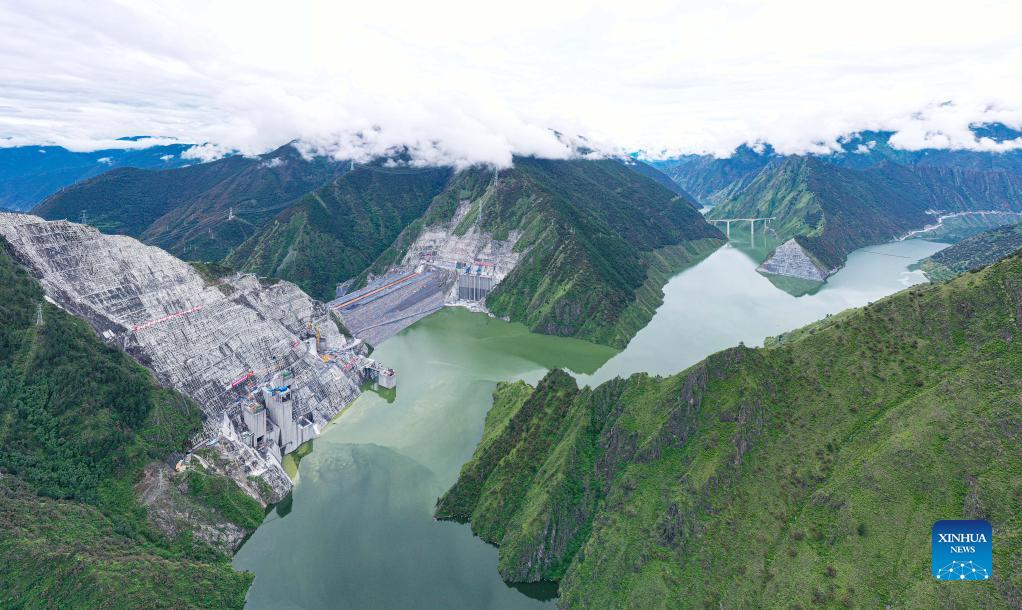China's highest-altitude mega hydropower plant goes operational
Aerial photo taken on July 15, 2021 shows a view of Lianghekou hydropower plant on the Yalong River in Tibetan Autonomous Prefecture of Garze, southwest China's Sichuan Province. This mega hydropower plant built at an average altitude of 3,000 meters, the highest one of its kind in China, went into operation on Wednesday. The first two 500,000-kW power generation units went operational at the plant, marking the operation of the plant with a planned total installed capacity of 3 million kW. (Xinhua)
CHENGDU, Sept. 29 (Xinhua) -- A mega hydropower plant built at an average altitude of 3,000 meters, the highest one of its kind in China, went into operation on Wednesday.
The first two 500,000-kW power generation units went operational at the Lianghekou hydropower plant on the Yalong River in Tibetan Autonomous Prefecture of Garze, Sichuan Province, marking the operation of the plant with a planned total installed capacity of 3 million kW.
Construction of the project, with an approved investment of 66.46 billion yuan (10.3 billion U.S. dollars), started in October 2014 and is expected to be fully completed by 2023, according to the Yalong River Hydropower Development Company, Ltd. (Yalong Hydro).
The storage capacity of the reservoir is designed to reach 10.8 billion cubic meters, and the annual power generation volume is expected to surpass 11 billion kWh upon full operation.
The Yalong River basin is one of China's clean energy bases. The Yalong Hydro has planned to create a "clean energy corridor" with a total installed capacity of 80 million kW of clean energy, including wind power and photovoltaic power.
The Yalong Hydro will promote the construction of the clean energy base of the Yalong River basin to contribute to China's carbon emission reduction goals, said Bai Tao, chairman of the State Development and Investment Corp., Ltd., controlling shareholder of the Yalong Hydro.
China has announced that it would strive to peak carbon dioxide emissions by 2030 and achieve carbon neutrality by 2060.
 |
Photos
Related Stories
- World's largest hydropower project under construction goes into operation
- China's massive hydropower station put into operation
- Construction of Baihetan hydropower station in SW China proceeds smoothly
- China's new mega hydropower station ready for operation
- Mega hydropower project in SW China will be fully operational in July
Copyright © 2021 People's Daily Online. All Rights Reserved.











